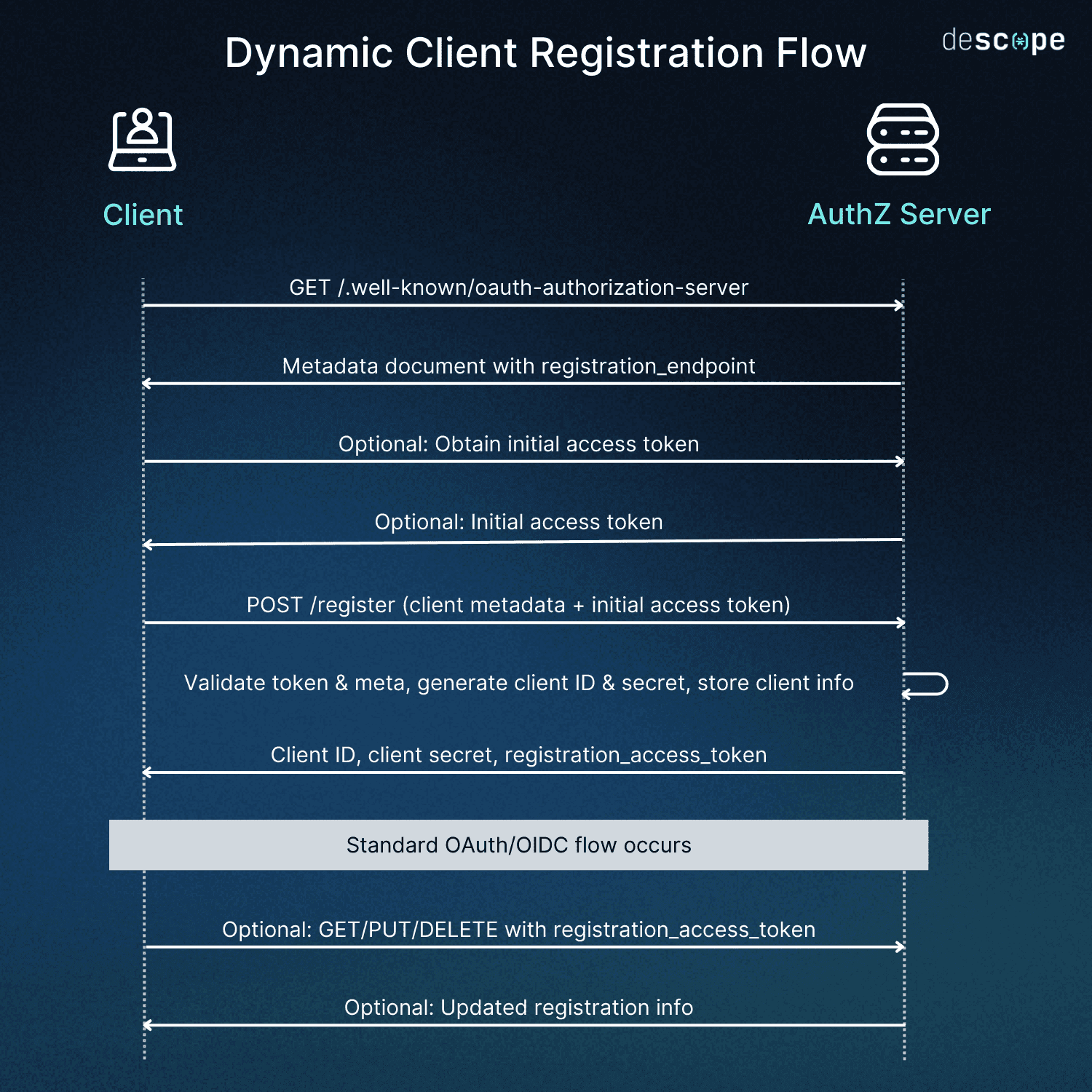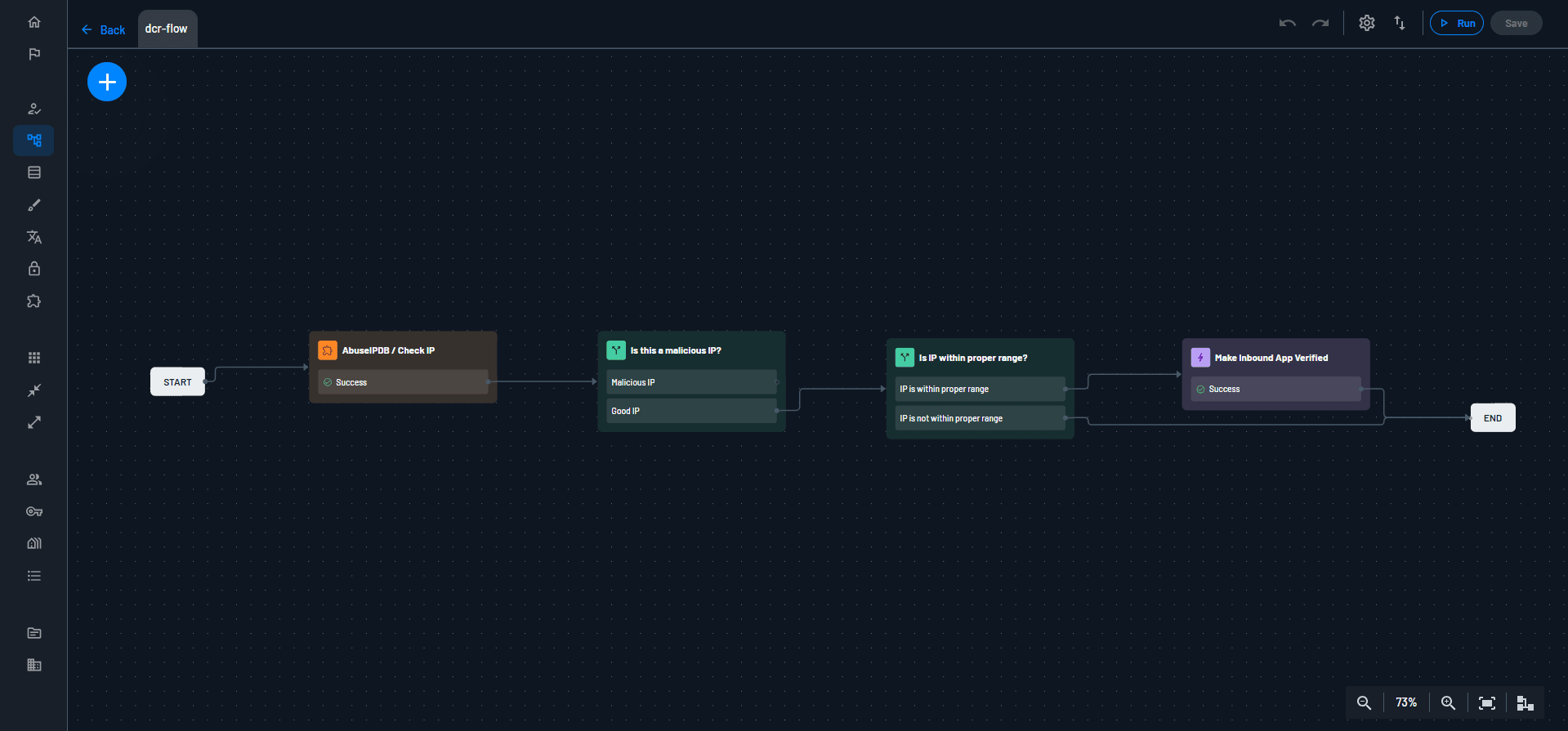Table of Contents
Understanding the problem Dynamic Client Registration solves
Imagine you’re checking out from a new online store. When paying directly with a credit card, you have to enter your shipping address, billing details, and card info every time you shop somewhere new. But if you’ve saved this info before, your browser might give you the option to autofill all your details with just one click—even if you’ve never shopped there before.
This is essentially what dynamic client registration does, but in the universe of web-based authorization. Just as autofill simplifies sharing your shipping address, dynamic client registration automates how applications connect with authorization servers.
In this guide, we’ll explore what makes dynamic client registration tick, how it works, and best practices for implementation.
Understanding the problem Dynamic Client Registration solves
Before diving straight into the nuts and bolts of Dynamic Client Registration (DCR), it’s crucial to understand the underlying problem it solves.
In traditional web-based authentication and authorization systems, when an application (called a “client”) wants to interact with a user’s account on a service, it needs to be pre-registered with that service’s authorization server. This registration process typically involves:
A developer manually registering their application
The authorization server issuing a client ID and possibly a client secret
The developer copying these credentials into their application’s configuration
The application using these credentials whenever it interacts with the authorization server
This manual process works well enough when an organization has a small number of clients connecting to a few authorization servers. But it quickly becomes cumbersome as the number of applications and servers grows, or when applications need to dynamically connect to new servers they weren’t originally configured for.
What is Dynamic Client Registration?
Dynamic Client Registration is a protocol that allows third-party client applications to automatically register with an authorization server without requiring manual pre-registration. The protocol was officially defined in RFC 7591 and is designed to work within the Open Authorization (OAuth) and OpenID Connect (OIDC) ecosystems.
DCR essentially automates the client registration process by:
Enabling clients to discover authorization servers and their registration endpoints
Allowing clients to submit their metadata (such as name, redirect URIs, and grant types) programmatically
Receiving client credentials (client ID and optionally a client secret)
Using those credentials immediately for standard OAuth/OIDC flows
Think of this like the difference between manually filling out a form versus having your browser’s autofill feature complete it for you. However, in this case, the entire registration process happens behind the scenes (without user intervention) between two systems.
Where DCR fits in the larger auth ecosystem
To understand DCR’s place in the bigger auth picture, it’s helpful to understand how it relates to OAuth and OIDC.
Open Authorization (OAuth)
OAuth is the industry standard for authorization on the web. It enables third-party applications to access a user’s account on a service without needing the user’s actual credentials. OAuth defines several flows for different types of applications, like web, mobile, and server-side apps.
One thing all OAuth flows have in common is that they require the client to have a client ID (and sometimes a client secret) issued by the authorization server. Traditionally, obtaining these credentials required manual registration, and DCR automates this step.
OpenID Connect (OIDC)
OIDC builds on OAuth by adding a standardized identity layer. While OAuth focuses on authorization (“What can this app do on behalf of the user?”), OIDC adds authentication (“Who is this user?”). The OIDC community actually developed DCR first, and the concept was later adapted and standardized for broader OAuth use. This means DCR works seamlessly with both pure OAuth scenarios and those that also support OIDC.
Why Dynamic Client Registration matters
DCR solves a number of key issues in modern digital identity:
Integration friction: Developers can use DCR to integrate with new authorization servers without manual registration or waiting for approval processes
DevOps and CI/CD: Automated deployments can include the provisioning of OAuth clients, eliminating manual steps that would otherwise slow down deployment pipelines
Mobile security: Each installation of a mobile app can register as a unique client, improving security over embedding the same credentials in every app instance
Multi-tenant SaaS: When a new organization joins a SaaS platform, OAuth clients can be automatically provisioned for their instance
AI agent ecosystems: With the rise of AI agents and the Model Context Protocol (MCP), DCR allows these NHIs (Non-Human Identities) to autonomously register with new services at runtime
Scaling many-to-many relationships: Organizations with many different applications connecting to many different authorization servers can avoid the exponential growth of manual registration
How Dynamic Client Registration works
The DCR process follows a clear sequence of steps that automate what was previously a drawn-out, manual process:

Discovery: Finding where to register
Before registration can happen, the client needs to find the registration endpoint. When a developer handles this manually, they must search documentation, developer portals, or contact administrators to find where and how to register their application.
With DCR’s automatic discovery:
The client queries the authorization server’s metadata document (typically at a well-known URL like
/.well-known/oauth-authorization-server)The metadata document contains the
registration_endpointURL and information about supported featuresThe client extracts the registration endpoint and prepares to submit its information
Access control: Getting permission to register (optional)
Not all authorization servers allow open registration, since letting anyone register can lead to security vulnerabilities. Many protect their endpoints to ensure only authorized applications can register:
The server may require an initial access token
This token could be obtained through various methods (developer portal, admin approval, etc.)
The token is then included as a bearer token (which essentially says, “Give the bearer access”) when making the registration request
While obtaining the initial token may involve some minor manual steps, it can be reused to register multiple clients programmatically, significantly reducing overhead.
Registration request: Sharing application details
At this stage, the client application automatically sends its metadata in a standardized JSON format to the registration endpoint. This can be built into the application’s initialization process, meaning that it requires no human intervention.
The request is an HTTP POST, and the JSON payload contains the client’s information like redirect_uri, client_name, etc. If required, the initial access (i.e., bearer) token is included in the authorization header.
Server processing: Creating the client record
The server immediately processes the request, validates the information given against its policies, and creates the client record. This eliminates approval delays and admin bottlenecks.
In processing the request, the server:
Validates the initial access (bearer) token, if it was required
Verifies the client metadata complies with its policies
Generates a unique client ID
For confidential clients (meaning those that can hold a secret securely), generates a client secret
Stores the client information in its database
Registration response: Receiving credentials
The server responds with the client’s registered information, and it may provide a registration_access_token if the client can manage its own registration later. The client application automatically receives the client ID, secret, and other registration details in the API response. The application can store these credentials and begin using them immediately without any manual configuration.
OAuth and OIDC flows: Putting credentials to work
With registration complete, the client can now use standard OAuth or OIDC flows:
It uses its client ID and secret to authenticate with the authorization server
It can request authorization from users
It can exchange authorization codes for access tokens
It can use refresh tokens to maintain access over time
Registration management: Updating or removing registration (optional)
If the server supports it (via RFC 7592), the client may also:
Retrieve its current registration information
Update its registration
Delete its registration when no longer needed
This self-service approach means developers can make needed changes quickly without waiting for admin approval, while at the same time maintaining security through the registration token.
Dynamic Client Registration security and implementation best practices
Using DCR effectively requires attention to both potential security vulnerabilities and practical implementation details. Here’s how to set up DCR without opening the door to just anyone:
Protection against abuse
Open registration systems are attractive targets for attackers. While there are certainly scenarios where open registration doesn’t pose a risk, the added step offers dramatically better security. Three precautions you can take are:
Gating off access with initial tokens: Rather than allowing anyone to register clients, require an initial access token obtained through a verified channel. This creates a sort of “checkpoint” before registration can begin.
Enforcing rate limits: If client secrets are ever compromised, they’re likely to enter a brute force attack’s list of options. Prevent these automated attacks by limiting how many registration attempts can come from a single source in a given timeframe.
Validating metadata: Attackers may try to register clients with malicious redirect URIs that could support phishing attempts. Validate all URIs against a strict pattern or policy—for example, only accepting URIs from specific domains.
While these DCR-specific tips can bolster your defenses, you still need to follow OAuth security best practices: maintaining secure token storage, using PKCE, and minimizing overscoping—just to name a few tactics.
Practical implementation tips
Both authorization servers and app developers know that even the most flawless deployment will eventually throw an error. What matters more than avoiding errors altogether is knowing how to recover from them gracefully. The tips below address error handling, security, and ease of deployment.
For authorization server admins
Enforce initial access tokens. Requiring these up front helps you maintain a secure perimeter without losing the benefits of automatic registration. While it may be optional on paper, it’s a necessity in many real-world applications.
Document metadata requirements. Clearly specify what client metadata your server accepts (and doesn’t). Presenting your requirements in a human-readable format means both developers and AI agents can figure out what went wrong if they get an error.
Build comprehensive logging: When issues arise, detailed logs are your best friend. They’ll show what happened, who tried to register, and where things went wrong. Tools like this are invaluable for troubleshooting.
For application developers
Keep your client metadata current. Outdated metadata leads to authentication failures. For example, if you change your application’s callback URLs but don’t update the registered direct URIs, users won’t be able to complete the login flow.
Implement opaque error handling: When registration fails on the client side, your app should communicate it gracefully with clear error messages that help users and developers troubleshoot.
Automate registration in pipelines: Incorporating DCR into your CI/CD process ensures that test environments get fresh credentials and reduces product deployment friction.
For both app devs and authZ servers, since token management follows standard OAuth security practices (e.g., secure storage and rotation), you’d apply those same principles to the tokens used in DCR.
Dynamic Client Registration in agentic systems and AI
Dynamic Client Registration is playing an increasingly important role in AI scenarios where autonomous action and machine-to-machine (M2M) communication are essential components. Unlike traditional human-oriented systems, AI agents often need to establish secure connections programmatically and at scale.
AI agent workflows using MCP can register themselves with authorization servers to access protected resources across different services. For example, a document processing AI might register with Google Drive to pull the information it needs to analyze.
As organizations deploy more autonomous systems, DCR eliminates what would otherwise be a significant, manual bottleneck. Rather than requiring IT staff to provision credentials for each new AI agent or service, these systems can handle their own registration while still operating within defined security boundaries.
The key advantage is maintaining security at machine-level speed. AI systems can obtain exactly the credentials they need at runtime, without sacrificing security or waiting for human approval.
Client ID Metadata Documents (CIMD) for MCP auth
While Dynamic Client Registration serves as a significant enabler for AI applications, the protocol's operational overhead and security issues at scale have led developers to seek an alternative, one particularly well-suited for modern AI and MCP scenarios: Client ID Metadata Documents (CIMD), a client registration method currently being standardized through an IETF draft and up for adoption by the MCP community.
CIMD takes a fundamentally different approach to the client registration problem. Instead of clients sending registration requests to a server's /register endpoint, the client's client_id itself becomes an HTTPS URL that points to a JSON document containing the client's metadata. When an authorization server encounters this URL-based client ID, it simply fetches the metadata document directly from the client's domain.
CIMD addresses several pain points that arise when DCR operates at scale:
No registration endpoint: Eliminates the
/registertarget that's vulnerable to abuseStable identities: One URL represents the entire application, not each instance
Domain-based trust: Servers can implement policies based on the client's domain
No database management: Authorization servers don't need to store and manage client registrations
Standard HTTP caching: Servers can cache metadata documents (typically for 24 hours)
As the identity ecosystem surrounding MCP evolves, many implementations may support both approaches: CIMD as a lightweight default for clients that support it, with DCR remaining available for closed environments or specific use cases.
Implementing secure client registration with Descope
Because our digital world is populated with countless apps, APIs, and services, it’s simply impossible for developers to pre-plan for every combination. MCP simplifies these connections, but securing your server according to the official MCP auth spec can be its own challenge altogether. Descope's MCP Auth SDKs and APIs simplify securing remote MCP servers, handling OAuth 2.1 authorization, PKCE, Authorization Server Metadata, and Dynamic Client Registration in just a few lines of code.
For enterprise security teams, the Agentic Identity Control Plane delivers end-to-end governance: scope-based policies that restrict agent access to minimum required permissions, enterprise-grade auditing to spot misconfigurations and rogue agents, and full lifecycle management from registration through revocation.

Whether you're building remote MCP servers, connecting AI agents to external tools, or managing AI agent identities across your organization, Descope's agentic identity infrastructure helps you move fast without sacrificing security. Explore our AI-focused demos or start building with our Free Forever account.




